#cell host & microbe
Explore tagged Tumblr posts
Link
Highlights
SARS-CoV-2 spike protein persists in the skull-meninges-brain axis in COVID-19 patients
Spike protein is sufficient to induce brain pathological and behavioral changes in mice
Spike protein enhances brain vulnerability and exacerbates neurological damage in mice
mRNA vaccines reduce, but do not eliminate, the spike burden
#covid#long covid#pasc#research#study#cell host & microbe#journal#brain#neurology#neuroscience#brain damage#neurological damage#vaccines#vaccines work#get vaccinated
19 notes
·
View notes
Text
anyway our CNS & brains are pretty complex, like we've barely figured out getting people with partial spinal cord damage back driving their own bodies + when we do it's still a roll of the dice & the processes are not all well understood... encephalitis can caused locked-in-ness like with sleeping sicknesses, akinetic mutism, etc where the body itself is not physically incapable of movement & action, but nothing is out there that jumps in and takes over from a driver who's paralyzed or asleep at the wheel... that's not actually a thing, it's fun speculative fiction but not representative of reality— so really, no worries lol
#the other thing is... we're megafauna?#like cordyceps hitches a ride on hymenoptera to get from point A to point B as part of their life cycle. no conscious goal#bc people often say ''oh a fungus/virus/microbe WANTS to spread & reproduce'' it doesn't WANT shit.#it is a single cell organism & s/t not even that— viruses are weird & not even always technically alive UNTIL a host or vector is infected#but my point being... we're like ''gone girl''...#amy dunne saying ''you think you'd be happy with piggybacking on my body on the way to something else? no way baby! I'm it.''#microbes don't NEED to do all that highly specialized evolution to take over my legs like that & walk over to a tree.#cordyceps needs more than one ant. nothing needs more than a potential for human to human transmission x 8 billion.#and you don't need my brain or body control to do that when you have my blood my spit my lungs etc#path of least resistance + greatest effectiveness; a zombie virus doesn't need to evolve. we have aids we have rabies we have sars#give us scurvy and it's curtains lol... we don't need viral zombies if a new strain of polio makes a comeback.#we're the tripods in war of the worlds and it's our own planet that can kill us with a cold.#but it's more fun to catastrophize about a Big Scary Fantasy Germ than to be like ''get a DPT vaccine.''#it won't be zombies; it will be infinitely more mundane; it will be infinitely worse.
10 notes
·
View notes
Text
Also preserved in our archive
Researchers at the Medical University of Vienna and the Medical University of Innsbruck discovered that SARS-CoV-2 hijacks three important host proteins that dampen the activity of the complement system, a key component of early antiviral immunity.
This significantly impairs viral clearance which may affect the course of both acute COVID-19 infections and post-COVID-19 sequelae. The study was recently published in the journal “Emerging Microbes & Infections”.
An early and effective immune response is crucial for resolving viral infections and preventing post-infectious complications. The complement system, a pivotal element of antiviral immunity, is a cascade of proteins found in the bloodstream and at mucosal sites, such as the respiratory tract. Activated through three different pathways, complement facilitates the clearance of virus particles by directly inducing their destruction (lysis). To prevent bystander damage to host cells, complement is rapidly inactivated by a set of host molecules referred to as complement regulatory proteins.
The new study led by Anna Ohradanova-Repic and colleagues from the Center for Pathophysiology, Infectiology and Immunology at the Medical University of Vienna in collaboration with the team of Heribert Stoiber from the Institute of Virology at the Medical University of Innsbruck shows that SARS-CoV-2 hijacks three of these regulatory proteins, CD55, CD59 and Factor H, and thereby successfully shields itself from complement-mediated lysis.
Hijacking host proteins for effective complement resistance By propagating SARS-CoV-2 in human cells the researchers discovered that the virus particles acquire the cellular proteins CD55 and CD59. Further experiments showed that SARS-CoV-2 also binds to Factor H, another complement regulatory protein that is primarily found in the bloodstream.
Confronting the virus particles with active complement revealed that they are partially resistant to complement-mediated lysis. By removing CD55, CD59 and Factor H from the virus surface or inhibiting their biological functions, the researchers could successfully restore complement-mediated clearance of SARS-CoV-2.
“Through hijacking these three proteins, SARS-CoV-2 can evade all three complement pathways, resulting in reduced or delayed viral clearance by the infected host,” Anna Ohradanova-Repic, the leader of the study explains. Because complement is intricately linked with other components of the immune system, this not only affects virus elimination but can also cause significant inflammation, a core feature of both severe COVID-19 and Long COVID. “Uncovering immune evasion mechanisms that allow the virus to linger within the host for longer, deepen our understanding of the acute and long-term impacts of SARS-CoV-2 infection,” says first author Laura Gebetsberger.
#mask up#pandemic#covid#public health#wear a mask#covid 19#wear a respirator#still coviding#coronavirus#sars cov 2
63 notes
·
View notes
Note
Hello! First of all, thank you for the wonderful content! It's a real joy, and an enrichment, food for both the brain and the heart! I was wondering if through your treasures, you could find some writing notes/words/concepts/vocabulary relating to genetic engineering? Like...creating a virus, and a vaccine for it, modifying the virus so it has certain specific effects.... Thank you in advance!
Writing Notes: Virus & Vaccine
References How Viruses Work; Replication Cycle; Mutation, Variants, Strains, Genetically Engineering Viruses; Writing Tips; Creating your Fictional Virus & Vaccine
Virus - an infectious microbe consisting of a segment of nucleic acid (either DNA or RNA) surrounded by a protein coat.
It is a tiny lifeform that is a collection of genes inside a protective shell. Viruses can invade body cells where they multiply, causing illnesses.
It cannot replicate alone; instead, it must infect cells and use components of the host cell to make copies of itself. Often, a virus ends up killing the host cell in the process, causing damage to the host organism.
Well-known examples of viruses causing human disease include AIDS, COVID-19, measles and smallpox. Examples of viruses:

Viruses are even smaller than bacteria and can invade living cells—including bacteria. They may interfere with the host genes, and when they move from host to host, they may take host genes with them.
Bacteriophages (also known as phages)—viruses that infect and kill bacteria.

Size differential between virus and bacterium
Viruses are measured in nanometers (nm).
They lack the cellular structure of bacteria, being just particles of protein and genetic material.
How Viruses Work
Viruses use an organism’s cells to survive and reproduce.
They travel from one organism to another.
Viruses can make themselves into a particle called a virion.
This allows the virus to survive temporarily outside of a host organism. When it enters the host, it attaches to a cell. A virus then takes over the cell’s reproductive mechanisms for its own use and creates more virions.
The virions destroy the cell as they burst out of it to infect more cells.
Viral shedding - when an infected person releases the virus into the environment by coughing, speaking, touching a surface, or shedding skin.
Viruses also can be shed through blood, feces, or bodily fluids.
Virus Replication Cycle
While the replication cycle of viruses can vary from virus to virus, there is a general pattern that can be described, consisting of 5 steps:
Attachment – the virion attaches to the correct host cell.
Penetration or Viral Entry – the virus or viral nucleic acid gains entrance into the cell.
Synthesis – the viral proteins and nucleic acid copies are manufactured by the cells’ machinery.
Assembly – viruses are produced from the viral components.
Release – newly formed virions are released from the cell.
Mutations, Variants, and Strains
Not all mutations cause variants and strains. Below are definitions that explain how mutations, variants, and strains differ.
Mutation - errors in the replication of the virus’s genetic code; can be beneficial to the virus, deleterious to the virus, or neutral
Variants - viruses with these mutations are called variants; the Delta and Omicron variants are examples of coronavirus mutations that cause different symptoms from the original infection
Strains - variants that have different physical properties are called strains; these strains may have different behaviors or mechanisms for infection or reproduction
Genetically Engineering Viruses
Using reverse genetics, the sequence of a viral genome can be identified, including that of its different strains and variants.
This enables scientists to identify sequences of the virus that enable it to bind to a receptor, as well as those regions that cause it to be so virulent.
Vaccine - a special preparation of substances that stimulate an immune response, used for inoculation
Vaccines & Fighting Viruses with Viruses
Common pathogenic viruses can be genetically modified to make them less pathogenic, such that their virulent properties are diminished but can still be recognized by the immune system to produce a robust immune response against. They are described as live attenuated.
This is the basis of many successful vaccines and is a better alternative than traditional vaccine development which typically includes heat-mediated disabling of viruses that tend to be poorer in terms of immunogenicity.
Viruses can also be genetically modified to ‘fight viruses’ by boosting immune cells to make more effective antibodies, especially where vaccines fail. Where vaccines fail, it is often due to the impaired antibody production by B-cells, even though antibodies can be raised against such viruses – including HIV, EBV, RSV & cold-viruses.
Related Articles: Modified virus used to kill cancer cells ⚜ Genetic Engineering ⚜ Engineering Bacterial Viruses ⚜ Benefits of Viruses
A Few Writing Tips
As more writers look to incorporate infectious diseases into their work, there are quite a few things writers should keep in mind:
Don’t anthropomorphize. Really easy to do, but scientifically wrong. Viruses don’t want to kill you; bacteria don’t want to infect you; parasites don’t want to make your blood curdle. None of these things are big enough to be sentient to want to do anything. They just do it (or don’t do it).
Personal protective equipment. This includes wearing gloves, lab coats, safety glasses, and tying your hair back if it’s long. It is the same as Edna Mode’s “no capes.” Flowing hair looks cool all the way to the explosive ball of flames that engulfs someone’s head.
Viruses are small. You can’t see viruses down a normal microscope—they need a special microscope called an electron microscope. These are highly specialized and take a long time to make the preparations to be able to see the virus. Normally viruses are detected by inference—measuring part of them using an assay that can amplify tiny amounts of material, for example PCR.
Viruses don’t really cause zombie apocalypses.
Vaccines work. But they take time. The best vaccine in the world will still only prevent infections two weeks after it is given. Drugs are quicker, but still take some time. But the good news is an infection is not going to kill you (or turn you into a zombie) quickly, so they both have time to work.
Scientists use viruses as a vector to introduce healthy genes into a patient’s cells:
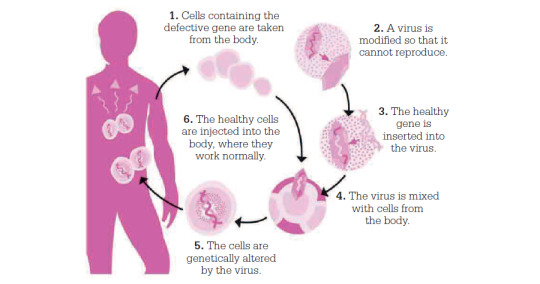
Your Fictional Virus & Vaccine
When creating your own fictional virus, research further on the topic and consider choosing a specific one as your basis/inspiration.
Here's one resource. For some of them, you'll need a subscription to access, but those that are available give you a good overview of the virus, as well as treatment options.
You can do the same for creating your fictional vaccine:
Here's one resource. And here's one on vaccine developments.
Sources: 1 2 3 4 5 6 7 8 9 10 11 12 13 ⚜ Writing Notes & References
Lastly, here's an interesting article on how science fiction can be a valuable tool to communicate widely around pandemic, whilst also acting as a creative space in which to anticipate how we may handle similar future events.
Thanks so much for your kind words, you're so lovely! Hope this helps with your writing. Would love to read your work if it does :)
#writing notes#virus#vaccine#writeblr#dark academia#spilled ink#writing reference#writing prompt#literature#science#writers on tumblr#creative writing#fiction#novel#light academia#lit#writing ideas#writing inspiration#writing tips#science fiction#writing advice#writing resources
80 notes
·
View notes
Text
Propaganda!
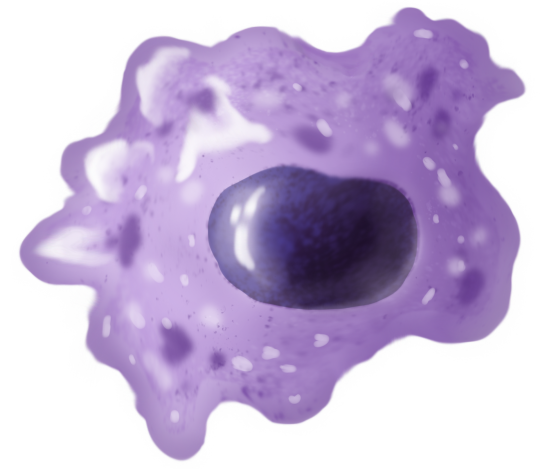
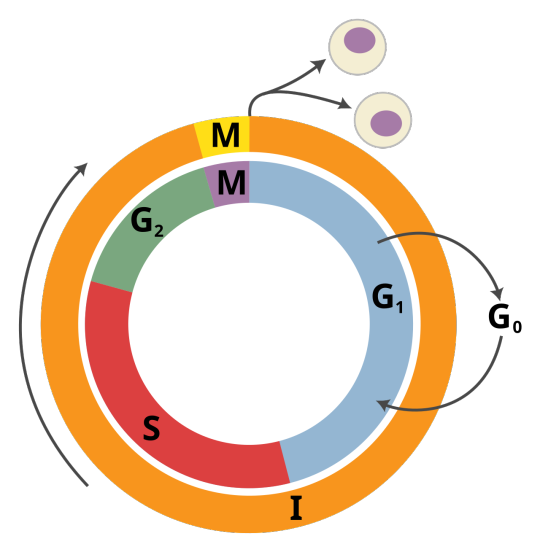
Macrophages (abbreviated Mφ, MΦ or MP) are a type of white blood cell of the innate immune system that engulf and digest pathogens, such as cancer cells, microbes, cellular debris, and foreign substances, which do not have proteins that are specific to healthy body cells on their surface. This process is called phagocytosis, which acts to defend the host against infection and injury. Macrophages are found in essentially all tissues, where they patrol for potential pathogens by amoeboid movement. They take various forms (with various names) throughout the body (e.g., histiocytes, Kupffer cells, alveolar macrophages, microglia, and others), but all are part of the mononuclear phagocyte system. Besides phagocytosis, they play a critical role in nonspecific defense (innate immunity) and also help initiate specific defense mechanisms (adaptive immunity) by recruiting other immune cells such as lymphocytes.
A tumor suppressor gene (TSG), or anti-oncogene, is a gene that regulates a cell during cell division and replication. If the cell grows uncontrollably, it will result in cancer. When a tumor suppressor gene is mutated, it results in a loss or reduction in its function. In combination with other genetic mutations, this could allow the cell to grow abnormally. The loss of function for these genes may be even more significant in the development of human cancers, compared to the activation of oncogenes. TSGs can be grouped into the following categories: caretaker genes, gatekeeper genes, and more recently landscaper genes. Caretaker genes ensure stability of the genome via DNA repair and subsequently when mutated allow mutations to accumulate.[3] Meanwhile, gatekeeper genes directly regulate cell growth by either inhibiting cell cycle progression or inducing apoptosis. Lastly, landscaper genes regulate growth by contributing to the surrounding environment, and when mutated, can cause an environment that promotes unregulated proliferation.
#Macrophages#Anti-oncogenes#poll#polls#tumblr poll#tumblr polls#tournament poll#wikipedia#cells of the human body#science tournament#biochemistry
72 notes
·
View notes
Text
The presence of parasitic microbes has for the first time been found literally altering the metabolism of their hosts. The culprits are tiny, parasitic archaea of the species Candidatus Nanohaloarchaeum antarcticus that parasitize other single-celled organisms, the host archaeon species Halorubrum lacusprofundi. And researchers have found that these parasites are very selective about the resources they steal from the body of their host.
Continue Reading.
70 notes
·
View notes
Text

The SARS-CoV-2 spike protein can accumulate and persist in the body for years after infection, especially in the brain—skull bone marrow and meninges—to induce neurologic damage, driving to Long COVID. mRNA vaccines help but cannot stop it, published in Cell Host and Microbe journal on November 29, 2024.
#COVID19 #Covid
https://www.cell.com/cell-host-microbe/fulltext/S1931-3128(24)00438-4
12 notes
·
View notes
Text
Research on the gut microbiome–the different types of bacteria that live in your intestinal tract–has increased in recent years. Scientists have discovered that these microbes have many interactions with their hosts (i.e., us!), both beneficial and harmful. Research suggests that a mother’s gut and vaginal microbiota impact her baby’s metabolic, immune, and brain health even outside the womb [1, 2].
A 2024 study published in the venerable British scientific journal Nature suggests that even Dad’s gut microbiome matters for Mom’s pregnancy health and for baby’s growth [3]. While the study was on mice rather than humans, the results may be generalizable to humans both because mice genomes are remarkably similar to human genomes, and also because disease patterns in mice mimic those in humans. This is an exciting new avenue of research, suggesting that Dad’s gut microbiome affects his germline tissue (the cells that form sperm), which in turn contributes to pregnancy and offspring health.
19 notes
·
View notes
Text

Watch Your Gut
Like loving gardeners fending off invasive weeds, some bacteria protect and nourish your gut while blocking out harmful bacteria that would burst in and wreak havoc. The relationship between these microbes is fundamental to gut health, so researchers are developing new platforms to observe and study this delicate balance. A team has recently established a miniature 3D recreation of conditions in the human gut (pictured). If bacteria can colonise the cells in this replica as they do in the gut then it would create an ideal stage to watch the interactions unfold. The researchers found that mechanical forces prompted the gut cells to secrete mucin, a mucus (red) that is both the first line of defence against, and an attachment point for, bacteria. They found that E. coli (green) colonised this layer, showing that the model can host bacteria, so the stage is set for investigation to begin.
Written by Anthony Lewis
Image from work by Jeeyeon Lee, Nishanth Menon and Chwee Teck Lim
Institute for Health Innovation and Technology (iHealthtech), National University of Singapore, Singapore, Singapore
Image originally published with a Creative Commons Attribution 4.0 International (CC BY 4.0)
Published in Advanced Materials, February 2024
You can also follow BPoD on Instagram, Twitter and Facebook
8 notes
·
View notes
Text
Parasites take an enormous toll on human and veterinary health. But researchers may have found a way for patients with brain disorders and a common brain parasite to become frenemies.
A new study published in Nature Microbiology has pioneered the use of a single-cell parasite, Toxoplasma gondii, to inject therapeutic proteins into brain cells. The brain is very picky about what it lets in, including many drugs, which limits treatment options for neurological conditions.
As a professor of microbiology, I’ve dedicated my career to finding ways to kill dangerous parasites such as Toxoplasma. I’m fascinated by the prospect that we may be able to use their weaponry to instead treat other maladies.
Microbes as Medicine
Ever since scientists realized that microscopic organisms can cause illness—what’s called the 19th-century germ theory of disease—humanity has been on a quest to keep infectious agents out of our bodies. Many people’s understandable aversion to germs may make the idea of adapting these microbial adversaries for therapeutic purposes seem counterintuitive.
But preventing and treating disease by co-opting the very microbes that threaten us has a history that long predates germ theory. As early as the 1500s, people in the Middle East and Asia noted that those lucky enough to survive smallpox never got infected again. These observations led to the practice of purposefully exposing an uninfected person to the material from an infected person’s pus-filled sores—which unbeknownst to them contained weakened smallpox virus—to protect them from severe disease.
This concept of inoculation has yielded a plethora of vaccines that have saved countless lives.
Viruses, bacteria, and parasites have also evolved many tricks to penetrate organs such as the brain and could be retooled to deliver drugs into the body. Such uses could include viruses for gene therapy and intestinal bacteria to treat a gut infection known as C. diff.
Why Can’t We Just Take a Pill for Brain Diseases?
Pills offer a convenient and effective way to get medicine into the body. Chemical drugs such as aspirin or penicillin are small and easily absorbed from the gut into the bloodstream.
Biologic drugs such as insulin or semaglutide, on the other hand, are large and complex molecules that are vulnerable to breaking down in the stomach before they can be absorbed. They are also too big to pass through the intestinal wall into the bloodstream.
All drugs, especially biologics, have great difficulty penetrating the brain due to the blood-brain barrier. The blood-brain barrier is a layer of cells lining the brain’s blood vessels that acts like a gatekeeper to block germs and other unwanted substances from gaining access to neurons.
Toxoplasma Offers Delivery Service to Brain Cells
Toxoplasma parasites infect all animals, including humans. Infection can occur in multiple ways, including ingesting spores released in the stool of infected cats or consuming contaminated meat or water. Toxoplasmosis in otherwise healthy people produces only mild symptoms but can be serious in immunocompromised people and to gestating fetuses.
Unlike most pathogens, Toxoplasma can cross the blood-brain barrier and invade brain cells. Once inside neurons, the parasite releases a suite of proteins that alter gene expression in its host, which may be a factor in the behavioral changes it causes in infected animals and people.
In a new study, a global team of researchers hijacked the system Toxoplasma uses to secrete proteins into its host cell. The team genetically engineered Toxoplasma to make a hybrid protein, fusing one of its secreted proteins to a protein called MECP2, which regulates gene activity in the brain—in effect, giving the MECP2 a piggyback ride into neurons. Researchers found that the parasites secreted the MECP2 protein hybrid into neurons grown in a petri dish as well as in the brains of infected mice.
A genetic deficiency in MECP2 causes a rare brain development disorder called Rett syndrome. Gene therapy trials using viruses to deliver the MECP2 protein to treat Rett syndrome are underway. If Toxoplasma can deliver a form of MECP2 protein into brain cells, it may provide another option to treat this currently incurable condition. It also may offer another treatment option for other neurological problems that arise from errant proteins, such as Alzheimer’s and Parkinson’s disease.
The Long Road Ahead
The road from laboratory bench to bedside is long and filled with obstacles, so don’t expect to see engineered Toxoplasma in the clinic anytime soon.
The obvious complication in using Toxoplasma for medical purposes is that it can produce a serious, lifelong infection that is currently incurable. Infecting someone with Toxoplasma can damage critical organ systems, including the brain, eyes, and heart.
However, up to one-third of people worldwide currently carry Toxoplasma in their brain, apparently without incident. Emerging studies have correlated infection with increased risk of schizophrenia, rage disorder, and recklessness, hinting that this quiet infection may be predisposing some people to serious neurological problems.
The widespread prevalence of Toxoplasma infections may also be another complication, as it disqualifies many people from using it for treatment. Since the billions of people who already carry the parasite have developed immunity against future infection, therapeutic forms of Toxoplasma would be rapidly destroyed by their immune systems once injected.
In some cases, the benefits of using Toxoplasma as a drug delivery system may outweigh the risks. Engineering benign forms of this parasite could produce the proteins patients need without harming the organ—the brain—that defines who we are.
17 notes
·
View notes
Text
Ok here's a refined version of my Night Country theory before Ep4 undoubtedly proves me wrong. Hear me out.
Emerson studied Horizontal Gene Transfer, which is the movement of genetic material between organisms not through reproduction.

An example of this? Gene Transfer Agents or GTAs. The frozen microbes could be able to do this. Honestly just read the page it explains it better than I ever could. Once the DNA particles are made by the host, it pops and dies to release them. But not always right away! Check out the Lysogenic cycle.(This is how it works when a straight up bacteriophage virus infects a bacterium, since this science fiction our guy is probably an amalgamation of these things) The bacterium gets to go on with its life and reproduce like normal while the virus/virus like particle chills out. It takes a specific trigger for the virus to start reproducing and killing the bacteria hosts. What kind of triggers? Certain chemicals (from the mines?). UV radiation. Before the caribou go crazy right after the sun sets. Before the video on Molina's phone cuts out, there's a flash.

Intentionally or not, the scientists were infected with the virus. An outside trigger caused it to start the lytic cycle, and mass rupture of cells made them freak out and run onto the ice. The infection being in brain tissue could explain the bleeding ears? Maybe it put pain/ pressure behind their eyes and this is what made they claw them out? If it was in their fingers that's why they tried to bite them off? For some reason I think Clark was not affected in the same way.
28 notes
·
View notes
Text
Hi everyone,
I found a fascinating article talking about the link between the gut micro biome and autism. Here are some excerpts from the article:
“A new paper, authored by no less than 43 scientists of various disciplines, has found the strongest link yet between gut microbes, host immunity, genetic expression in the nervous system, and dietary patterns.”
“Today, scientists know that people with autism are more likely to experience gastrointestinal issues, such as constipation, diarrhea, bloating, and vomiting.
What's more, in recent years, researchers have begun to find links between the makeup of microbes that call our guts home and neurodevelopmental disorders, like ASD.
Nevertheless, this connection isn't always consistent, and some experts have argued it isn't gut bacteria that trigger ASD, necessarily; it could be that kids with autism are more likely to restrict their diets because of 'picky' eating, which in turn influences the kinds of bacteria that persist in the digestive tract.
The new study incorporates 10 existing datasets on autism and the microbiome, plus 15 other datasets regarding dietary patterns, metabolism, immune cell profiles, and gene expression profiles of the human brain.”
The full article will be below in case anyone would like to read more.
Autism
#autism#actually autistic#autism and the gut#autism and the GI tract#autism and physical health#gut microbiome#feel free to reblog/share#tw bright colors#tw eye strain#source: ScienceAlert
71 notes
·
View notes
Text
Fantasy Ecology (Worldbuilding of Yssaia)
Buckle in, folks -- I got fantasy creatures AND etymology for you <3

While I'm not the biggest ecology/spec evo person, my friend Jay is. She's figured out how the grasses evolved and why there aren't rodents in Yssaia and she's commissioned SO MUCH art on my behalf, I just 🥺🥺🥺
So, today, I'm going to showcase some of the plants and creatures she has made or influenced throughout Yssaia, since I def don't have time to do it all. But if you want to know more (and you don't mind that my website's images don't work) you can always visit tinyurl.com/Yssaia and read basically everything.
Plants — South vs. North


Euthalia's Flower Pamphlet gives you a pretty good idea of the humid, temperate environment of the Isle of Telethens and the North Coast of the Aftokratoria. The plants, overall, can spread out their leaves and blooms to absorb the sun without worry about freezing. Meanwhile, Vivinne's Pamphlet of Northern Plants paints a pretty stark contrast of gothy black plants whose pigment is designed to absorb light waves closer to infrared and ultraviolet because there is simply not a lot of that direct, white sunlight under the Upper Continent. Notice that the plants can't be as water-filled -- they'd just freeze in the eternal snows. Since Ysse magic is a thing, I'd like to think Northern plants have evolved shapes that increases the heat around them, making them ideal for shelter-creation too.
Rumateurs, the "Llamas"
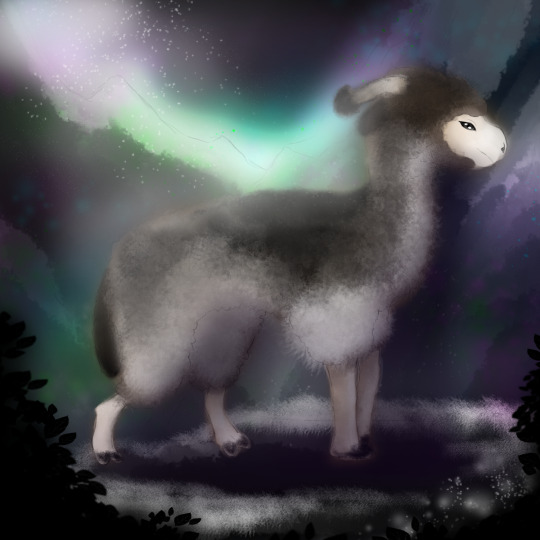
Rumateurs are llama-like (and less alpaca-like) creatures with ossicones (like giraffes!) instead of horns! Think like 300+ lbs, thick muscle, smarter cuz they're pack animals (not herd animals) and need their toes clipped cuz they grow continuously. Their big noses evolved to heat the air with their body heat before it enters the rest of their system in their cold climate. They have split toes to make it easier to climb. Northerners rely on them for transportation in the craigy valleys and for their wool, meat, milk, hooves, and bones. FUN FACT: Only one of the rumateurs in my game will let you pet it, and other one will spit on you because it hates rich people.
Flavoneite, the Void Beasts

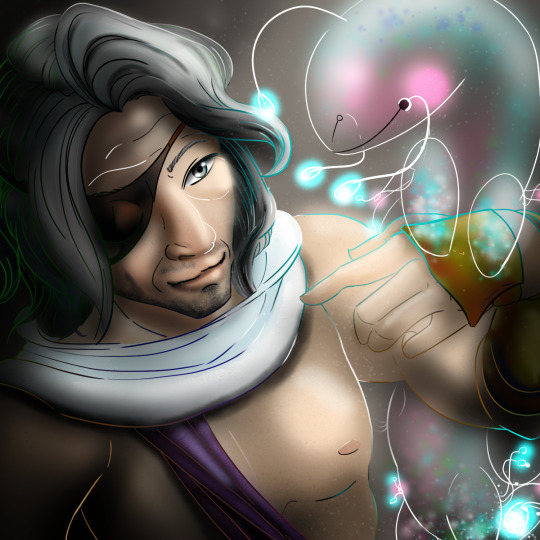
Flavoneite are six-legged, cat-sized, slug-like parasites who feed primarily on blood and Ysse crystals. Due to their jaw-shape and circulatory system, when they bite you, you lose the ability to perceive them -- as they manipulate your Ysse and thus, your central nervous system. Flavoneite hosts can last weeks or even months before disease and infection overtake, but will quickly become irritable or even hostile if you try to remove the Flavoneite. Talented mages can draw a Rune of Opening on the back of the Flavoneite to remove it but given the difficulty of getting close to the hostile hosts, sometimes it's simply easier to kill the Flavoneite before the host dies and its needs a new one. Entire villages have had to be burned to try to be rid of these things. Without a blood supply, however, Flavoneite can survive on Ysse crystals alone for up to six months -- they are extremely difficult to get rid of, once they are around.
Nonetheless, Senator Diacaius Praefori keeps a pet Flavoneite. He promises she doesn't bite. Much. And for some reason, he can still see it just fine...
Sandworms

The Sandworms of the desert, related to the Flavoneite, Eleftegos, Maret, and Shagbeasts also on this list, have evolved alongside the Sha Hir'za. The Sha Hir'za have bred them for companionship, protection, hunting, transportation, and terraforming. They all have ivory shells that guard their back and heads, though the exact size and shape varies by the specific breed. Note the purple hue on their bellies -- this is a special cell that helps sustain the Sandworm with photosynthesis when they don't have a lot of food. They primarily filter feed on microbes in the sand, but they can eat basically anything if it's small enough -- from insects to seeds to salt crystals.
Notably, Sandworms are not the local equivalent of Kosher.
Dageos, the Houndlets

The Dageos is a fast, pack predator with lop rabbit-like ears, fangs, and an extremely lithe body -- maybe weighing around 80 lbs at the biggest. They fill a similar niche to foxes and some Svanihk villages let them roam around openly. Dageos will sometimes hunt lone eleftegos but generally prefer to scavenge other meals or hunt smaller prey.
Eleftegos, the Ivory Beast

Eleftegos are omnivore filter-feeders with eat algae, plants, and small fish if they're able. Humans have never domesticated them, but they're so docile and intelligent that a well-meaning human can teach them to carry them around. While some Tsars might just traumatize their companions into subservience, most Tsars and Witches revere and love their livelong companions -- and while no one can talk to them, the assumption is that Eleftegos think humans are really really human and like to carry them around places (much like you would carry your own fluffy companion everywhere, if you could!)
Eleftegos actually means "Ivory Beast" because the Telethenians who named them traded Ivory before they had the creature, and then just named the creature after that. (You can harvest the Ivory without hurting the beast! They seem to be cool with this, once they realize it doesn't hurt.) The Svanhik folk have their own name for them that has nothing to do with their ability to produce Ivory.
Maret, the Slugbunny

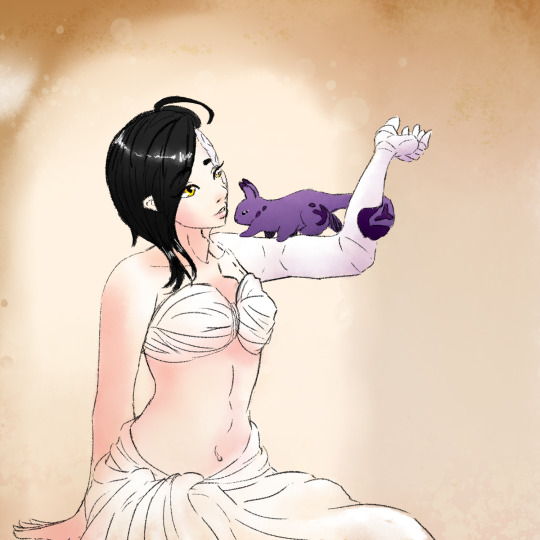
Marets -- named so by the Svanihk folk for their six legs or six eyes (Ok, I just realized that makes no sense to you but roll with it lol) -- fill the ecological niche of ocelots. They hunt small animals, like voles and smaller lagomorphs, and fish, but end up as prey to larger predators. In the wild, their slimey pelts(?) are usually brown and gray with a couple of bright spots on their underbellies to impress their mates and to seem poisonous, but humans have bred them to be more different and bright colors.
Also, Arlasaire's seeing-maret, Fuafua, is purple for a very specific reason that I won't get into because it's spoilers. But, you gotta trust me. BUT ALSO, Fuafua is purple because my favorite color is purple and she's the mascot of Yssaia! Every franchise needs a cute animal mascot, right? Fuafua is perfect <3 <3 <3
Meuu and Meuu'otes, the Bunnygoats and Goat-bunnies

Okay, lemme tell you the story that Jay told me: On some island in the Mediterranean, there were a bajillion rabbits. Then, the ice age happened and goats came to the island. Well, after the ice age ended, the goats outcompeted the rabbits... but then, they started looking more and more like rabbits.
Thus, meet the Meuu (pronounced "Mew") -- the goats of Telethens. They're Bunnygoats. That being said, since Telethens haven't had rabbits for millennia probably, the word for "bunny" is "little goat", basically.
Telethenian Natural Philosophers note that, around the world, there is a tendency for everything to evolve back into a rabbit. (You know, like how carcinization says everything is evolving into a crab!) This may have something to do with how Ysse impacts the creatures of Yssaia.
Dandelion Fields on the Upper Continent

The Upper Continent is home to fields and fields of dandelions, as the grasses haven't arrived up here to outcompete them yet. These dandelions are frequently considered to be a symbol of human desire, hopes, and rebirth -- and they're a welcome backup food source wherever they grow.
Shagbeasts
Maybe TW: Arachnophobia but no spiders, Shagbeasts are fucking horrible.
Shagbeasts are the primary grazers inhabiting North Chrysig. They feed by raking their beak-like mouths across the ground to shovel the topsoil into enormous throat pouches before filtering the dirt out by shaking it through numerous pores in the throat.
They may seem docile and sweet from a distance. But, as they filter feed, their pores become clogged. They ooze a thick yellow mucus that coats the obstruction until it hardens and becomes smooth enough to be passed.
This mucus has an unbearable stench that shagbeasts are always coated in a pestilent aura that can sicken any unaccustomed to the smell. But these hardened pearls of shagbeast mucus have quickly become a valuable alchemical ingredient -- akin to whale ambergris.
But even more monstrous are their winged offspring: The Vampyrlings. The Vampyrlings are flighted, juvenile shagbeasts. They roost by hanging upside down from the shoulder-antlers of their parents. Unable to produce milk, shagbeasts feed their young by allowing the brood to parasitize their own flesh.
Without crucial hormones found in the blood of a host shagbeast, vampyrlings are unable to mature, and so, despite being able to fly, they are unable to venture from North Chrysig to colonize South Chrysig or the Lower Continent.
Vampyrlings will also violently swarm any creature that ventures too close to their host, and unless half or more of their number are killed, the swarm will not abate. But when it does, they will choose the easiest source of food yet: their fallen siblings.
The alleged "Land of the Gods" has done nothing to burn away the monstrousness from these beasts.

That's all for now folks!
Something that's important to remember, with the names of all my creatures (and yours) is that... language has power. If you have a conlang/fantasy name, which culture got to name the creature? I've tried to give all my creatures Englishy names so that you don't feel like one of my cultures' languages is more important than another (although there's many cases where I've just named them in only one language because I am LAZY lolol) but it's just something to consider.
BTW Idk if I've mentioned it elsewhere yet but all my work is available under the Creative Commons 4.0 license, meaning it's irrevokably okay to borrow and/or steal, as long as you credit us! I'm a big proponent of the free spread of ideas so if you want, you can use any of this in your own work -- even if it's commercial! Let me know if you do <3 <3 <3
#spec evo#fantasy creature#creature design#speculative evolution#speculative biology#worldbuilding#fantasy world#fantasy plants#fantasy writer#Yssaia#Amaiguri
20 notes
·
View notes
Text
Also preserved in our archive
By John Flint
A landmark study has found the virus that causes COVID-19 accumulates and persists in the body - especially the brain - for years after infection.
The international team of scientists believe what they have discovered can help explain long COVID.
The research builds on other studies showing the invasiveness of the SARS-CoV-2 virus and the long-term implications.
“Using optical clearing and imaging, we observed the accumulation of SARS-CoV-2 spike protein in the skull-meninges-brain axis of human COVID-19 patients, persisting long after viral clearance,” the study authors reported in leading biomedical journal Cell Host and Microbe last week.
Meninges are three layers of membranes that cover and protect the brain and spinal cord.
Infectious disease experts in Australia have acclaimed the peer-reviewed study.
Professor Brendan Crabb, Director and CEO of the Burnet Institute for Medical Research and Public Health in Melbourne said the study underlined the need to treat COVID more seriously.
“This work uses cutting edge imaging technology to see things (molecules and cellular structures) to a resolution not achieved before in and around the brains of people infected with SARS-Cov-2 and mice infected with a version of SARS-Cov-2 modified to (infect) mice.
“The virus moves around the body, elegantly confirming what we already know.
“This paper shows that the virus, and especially shed spike protein, can persist around the brain for a long period of time, driving a pathological inflammatory response. This is proposed as a likely cause of the neurological symptoms people with acute and long forms of COVID experience.
“Although not without limitations, this works adds substantially to a large body of work that says COVID enters via the respiratory tract but goes into your bloodstream and so quickly moves around the body accessing many tissues, including the outer regions of the brain.
“Virus in this brain region likely persists and seemingly sheds spike protein which can be further neuro-invasive and persist even longer, (for) years even. This spike persistence is pathological, driving inflammatory responses that have likely consequences for proper brain functioning, such as memory, cognition and neurodegenerative diseases.”
“Next time you think of dismissing COVID as just another annoying common cold it may pay to visualise what you see so starkly in this paper, the virus moving freely around your body and finding a long-term home in all sorts of places where it can really cause trouble, including the brain and the heart,” Prof Crabb, who’s on the board of the WA-based Kids Research Institute Australia, added.
“This work further emphasises the need for individuals, and societies as a whole to take this infection more seriously and try and reduce the amount of transmission using the tools we currently have, most especially vaccination, clean indoor air approaches and well-fitted masks in crowded and poorly ventilated indoor settings.”
“It also showed mRNA spike-based vaccines are protective against spike accumulating in the brain periphery, consistent with what we already know about their protective effect in long COVID.”
Perth long COVID sufferer Melissa Challenor has been sick for two years.
“It’s not getting any better for me,” she said on Friday. “People like me are not making shit up. It’s in our brains, it’s in our bodies, it’s in our organs.
“I’m still being seen by the senior neuro physio at Sir Charles Gairdner Hospital who’s been amazing, but now he’s sort of going, ‘Well, where do I refer you? Do I refer you to the Parkinson’s people? Do I refer you to the dementia people?’ Because the neurological symptoms are really quite bad.”
In a commentary published by the Medical Journal of Australia two weeks, researchers from the Burnet Institute said long COVID may be driven by “long infection” and that persistent replicating SARS‐CoV‐2 may be the “unifying driver for long COVID”.
The institute’s Dr Michelle Scoullar said studies had found traces of the virus in many tissues, blood and the gut well after an initial infection.
“We know vaccines can reduce the risk of long COVID, but if the virus continues to be active, antiviral treatments could be a potential treatment for long COVID and might even offer a cure,” she said.
“By prioritising prevention, advancing treatments, and improving access to vaccines, we can take significant steps toward addressing the global challenge of long COVID.”
In the United States, about 5.5 per cent of people infected with COVID experience long-term health effects, including fatigue, muscle pain, and impaired cognitive function.
A recent study demonstrated a lowering of IQ by six points in individuals with long COVID relative to unaffected individuals. Individuals with mild acute infection showed a three‐point drop in IQ. Children can also get long COVID. A US study in August reported symptoms in 6-to-11 year-olds were different to those for adolescents.
Researchers at the NYU Grossman School of Medicine found that “younger children were more likely to experience a cluster of symptoms relating to stomach and digestive problems, and another characterised by sleep and memory/focus issues, while adolescents had a cluster dominated by change in smell or taste.”
Long COVID also carries an economic burden in terms of lost labour hours. It cost the Australian economy about $9.6 billion in 2022, a study by The Kirby Institute at the University of NSW, reported.
#mask up#public health#wear a mask#pandemic#wear a respirator#covid#still coviding#covid 19#coronavirus#sars cov 2
39 notes
·
View notes
Note
Antibiotics are called by two names: antiseptics (if used on living things like humans) and disinfectants (if used on nonliving things like surfaces). Antiseptics consist of (but are not limited to) things like alcohol (ethanol), halogens (iodine [betadine]), and metals (silver). Disinfectants consist of (bit are not limited to) phenol (most common; household lysol), bleach, and nonphysical methods such as UV light. The most common antibiotics used in the medical field are beta-lactams, or drugs that contain a beta-lactam ring, like penicillin or other -cillins. Sterilization refers to the killing of all microbes in a host or on an object or surface. Sanitization refers to the reduction of microbe populations to safe levels. Commercial sterilization is the killing of only pathogens. Bacteriostatic antibiotics are drugs or substances that keep bacterial populations at a safe level (static = same/unchanged). The effectiveness of an antibiotic can be tested using tube dilution, in which different concentrations of the antibiotic are inoculated with bacteria and the population reduction is measured. Antibiotics can also be tested by streaking a Petri dish with a given bacteria and adding paper disks filled with the antibiotic. The radius of dead bacteria around the disk is measured. The phenol coefficient is used to denote the effectiveness of an antibiotic (1 = as efficient as phenol, -1 = less effective than phenol, +1 = more effective than phenol).
Innate immunity is the body's first line of defense against pathogens (bactetia, protozoa, fungi, viruses, etc). It is made up of mucous membranes and the skin, as well as their secretions (enzymes, acids, mucin, defensins, sebum, and dermcidin in sweat). Phagocytes (cell-eaters), natural killer cells (NK cells), and the inflammatory response (swelling, vasodilation, and increased body temperatures due to fever that bring more leukocytes to the infection site and speed up immune cell metabolism) are the body’s main combatants in the fight against disease. The innate immune system kills most pathogens indiscriminately. Adaptive immunity takes care of the pathogens that make it past the innate immune system. It consists of B cells, T cells, and various cytokines which form antibodies. It remembers how to kill pathogens and quickly kills them in the event of a repeated infection
Hope this helps!
Let's have a spring wedding
#anon i love u#asks#anon asks#we love anons#and we loathe microbiology#''but vi then why did u change your major to microbiology-''#SHHH DONT WORRY ABOUT IT#apparently being a woman in STEM means i have to take STEM classes literally who could've seen this coming
4 notes
·
View notes
Text
Take the southwest corner of the West African nation of Guinea. One of the world's most biodiverse forests once covered the region. Large tracts of underdeveloped forests, being difficult for people to penetrate, had limited contact between forest animals and humans. Wild animals could live in the forest without encountering humans or human settlements.
That changed during the 1990s, as the Guinean forest was steadily destroyed. A wave of refugees descended upon the forest to escape a long, blood, complex conflict between armies and rebel groups from neighboring Sierra Leone and Liberia. (At first they'd tried to settle in refugee camps in the forest area's central town of Guéckédou, but rebel groups and government soldiers repeatedly attacked their camps.)
The refugees cut down trees to plant crops, build huts, and turn into charcoal. Rebel groups started logging the forest, too, selling timber to finance their battles. By the end of the 1990s, the transformation of the forest could be seen from space. In satellite images from the mid-1970s, the jungles in Guinea bordering Libera and Sierra Leone looked like a sea of green splattered with tiny islands of brown, where small clearings had been made for villages. Satellite images from 1999 showed a complete reversal: a sea of treeless brown, with tiny islands of green forest speckled in between. Of the entire region's original forests, only 15 percent remained.
Just how this wide-scale deforestation affected the forest ecosystem has yet to be fully described. Many species that lived in the forest probably just disappeared when humans moved into their habitats. What is known is that some species stayed. They squeezed in, resorting to smaller patches of remaining stands of trees, in increasing proximity to human habitations.
Bats were among them. It stands to reason: bats are widely distributed and resilient creatures. Of 4,600 species of mammals on earth, 20 percent are bats. And, as a study in Paraguay found, certain bat species thrive in disturbed forests in even higher abundances than in intact ones. Unfortunately, bats are also good incubators for microbes that can infect humans. They live in giant colonies of millions of individuals. Some species, like the little brown bat, can survive for as long as thirty-five years. And they have unusual immune systems. For example, because their bones are hollow, like those of birds, they don't produce immune cells in their bone marrow like the rest of us mammals do. As a result, bats host a wide range of unique microbes that are exotic to other mammals. And they travel around with these microbes over significant distances, because bats can fly. Some even migrate, traveling thousands of miles at a time.
As the Guinean forest was chopped down, new kinds of collisions between bats and people likely occurred. Bats were hunted for meat, exposing hunters to microbe-laden bat tissue when the animals were slaughtered. Bats fed on fruit trees near human settlements, exposing local people to their saliva and excreta. (Fruit bats are notoriously messy eaters; their modus operandi is to pick off ripe fruit and suck out the juice, littering the ground below with saliva-covered, half-eaten fruits.)
At some point – nobody knows just when – a microbe of bats, the filovirus Ebola, started to spill over and infect people. In humans, Ebola causes hemorrhagic fever and can kill 90 percent of those it infects. A study of blood samples collected from people in eastern Sierra Leone, Liberia, and Guinea between 2006 and 2008 revealed that nearly 9 percent had been exposed to Ebola: their immune systems had created specific proteins called antibodies in response to the virus. A 2010 study of over four thousand people in rural Gabon, where there'd been no outbreaks of Ebola, similarly found that nearly 20 percent had been exposed to the virus.
But nobody noticed. The ongoing conflict had severed supply routes and communication networks, leaving the refugees hiding in the jungle bereft of outside help. Even the most stalwart aid organizations such as Médecins Sans Frontières had been forced to withdraw. The isolation coupled with the violence compelled the United Nations to call the West African refugees' plight “the worst humanitarian crisis in the world.”
It wasn't until the political violence eased, in 2003, and the people hiding in the Guinean forest slowly reconnected with the rest of the world that the virus's presence became apparent. On December 6, 2013, Ebola virus sickened and killed a two-year-old child in a small forest village outside Guéckédou. Perhaps the toddler had played with a piece of fruit covered with bat saliva, fallen from a nearby tree. Perhaps the parents had been handling a recently slaughtered bat before picking up the child. It was probably not the first time someone in the Guéckédou area had encountered Ebola virus from a local bat. But this time, the people of Guéckédou were no longer as isolated as they'd been in the past. The virus was able to spread.
— Pandemic: Tracking Contagions, from Cholera to Ebola and Beyond (Sonia Shah)
#sonia shah#pandemic: tracking contagions from cholera to ebola and beyond#science#virology#epidemiology#ecology#deforestation#animals#zoology#warfare#refugees#sierra leone civil war#guinea#sierra leone#liberia#ebola#bats
2 notes
·
View notes